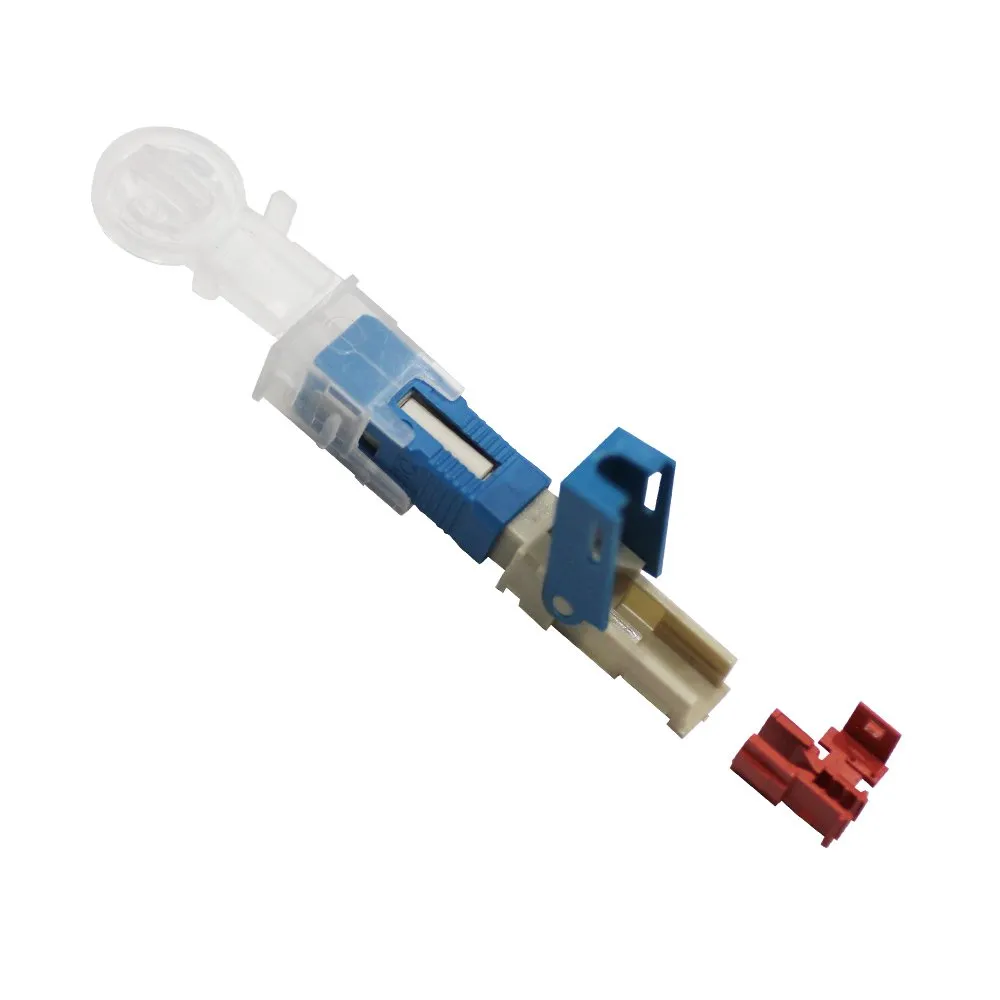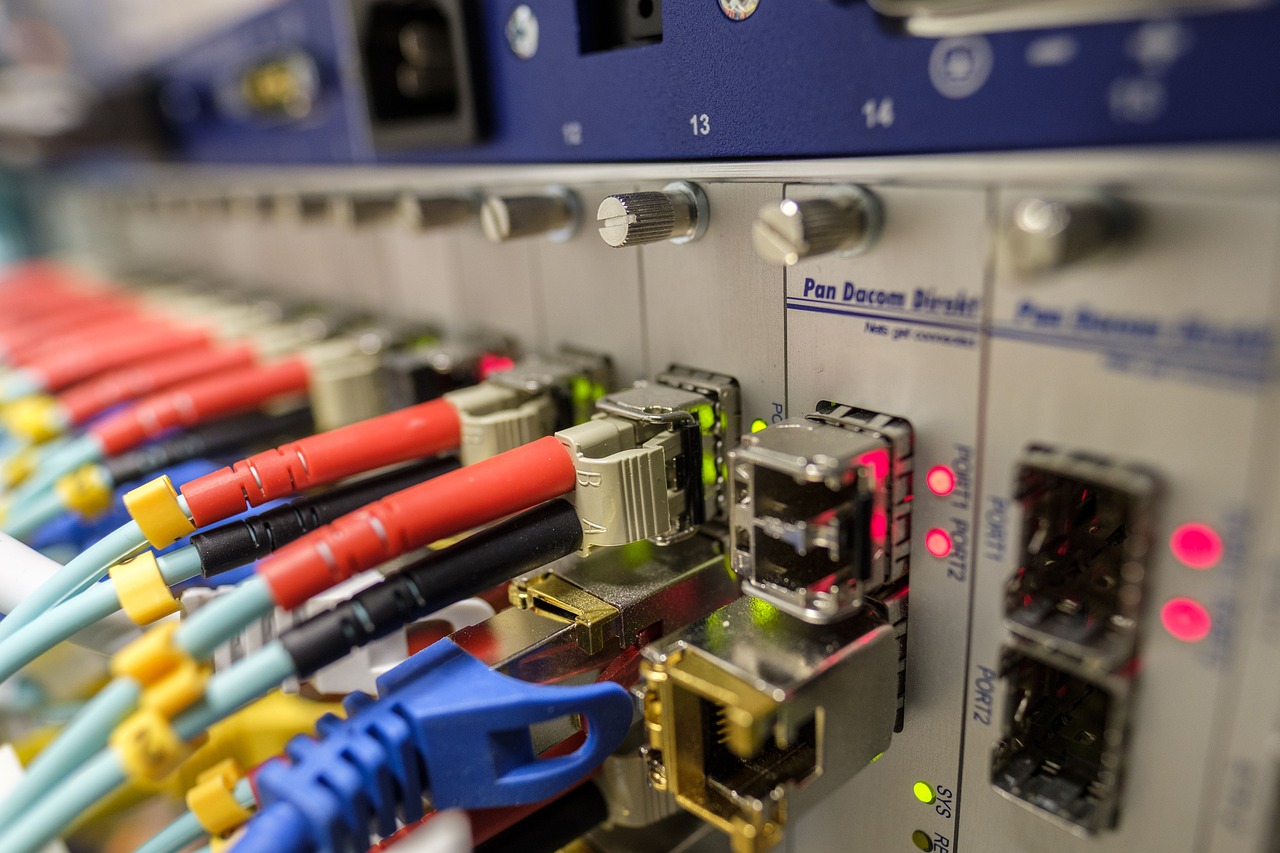Solving Fiber Interconnection Challenges with 2.0×5.0mm SC UPC Single-Mode Field Assembly Optical Connectors

Understanding Fiber Interconnection Challenges
Fiber interconnection plays a crucial role in ensuring seamless data transmission and network efficiency within the telecom industry. Fiber interconnection refers to the process of connecting optical fibers to enable the transfer of data signals between network components. This intricate process is essential for establishing reliable and high-speed communication networks.
Common challenges in fiber interconnection arise from the delicate nature of optical fibers. These challenges include signal loss, dispersion, and connection instability. Ensuring precise alignment and minimizing signal loss during the connection process are key challenges that need to be addressed for optimal network performance.
Reliable connections are paramount in telecom infrastructure as they directly impact data transmission. Any disruptions or inconsistencies in fiber interconnection can lead to data loss, latency issues, and compromised network reliability. The need for speed and efficiency further emphasizes the criticality of establishing robust and stable fiber connections to support the ever-increasing demand for high-speed data transfer.
The Role of Optical Connectors in Modern Telecom
In modern telecom infrastructure, optical connectors serve as the backbone of fiber networks, facilitating the seamless transmission of data signals across various network components. Understanding the functionality and types of optical connectors is essential for ensuring efficient and reliable connectivity within telecom systems.
How Optical Connectors Work
Optical connectors are instrumental in establishing connections between optical fibers, enabling the transmission of data signals with minimal loss and interference. These connectors utilize precise alignment mechanisms to ensure that the cores of connected fibers are accurately aligned, allowing for the efficient transfer of light signals. By maintaining this alignment, optical connectors play a pivotal role in minimizing signal loss and maximizing the efficiency of data transmission within fiber networks.
Types of Optical Connectors and Their Uses
There are several types of optical connectors, each designed for specific applications based on factors such as connection density, ease of use, and environmental considerations. Some common types include SC (Subscriber Connector), LC (Lucent Connector), and ST (Straight Tip) connectors. Each type has unique characteristics that make it suitable for particular network setups and requirements. For instance, SC connectors are widely used in high-density environments due to their compact size, while LC connectors are favored for their easy installation and removal capabilities.
Single-mode vs. Multi-mode Fibers
When it comes to optical fibers, two primary categories exist: single-mode and multi-mode fibers. Understanding the differences between these fiber types is crucial for determining their suitability in various telecom applications.
Understanding the Differences
Single-mode fibers have a smaller core size compared to multi-mode fibers, allowing them to transmit data over longer distances with lower dispersion. On the other hand, multi-mode fibers have a larger core size, making them suitable for shorter-distance transmissions within local area networks (LANs) or premises.
Why Single-mode is Preferred for Telecom
In telecom infrastructure, single-mode fibers are preferred due to their ability to support long-distance transmissions with minimal signal degradation. This makes them ideal for interconnecting network nodes across vast geographical areas while maintaining high-speed data transfer capabilities. The use of single-mode fibers aligns with the telecom industry's emphasis on establishing reliable long-haul communication links to meet growing bandwidth demands.
Introduction to 2.0×5.0mm SC UPC Single-Mode Field Assembly Optical Connectors
In the realm of fiber interconnection, the 2.0×5.0mm SC UPC Single-Mode Field Assembly Optical Connectors stand out as a cutting-edge solution designed to address the challenges associated with establishing and maintaining robust fiber connections.
Features of 2.0×5.0mm SC UPC Optical Connectors
Design and Specifications
The 2.0×5.0mm SC UPC connectors are meticulously engineered to meet the stringent demands of modern telecom infrastructure. Their compact yet sturdy design allows for seamless integration into diverse network environments, ensuring compatibility with a wide range of optical fibers and connection equipment. The precise dimensions and material composition of these connectors contribute to their exceptional durability and reliability, making them well-suited for deployment in demanding telecom settings.
Field Assembly: A Game Changer
One of the standout features of the 2.0×5.0mm SC UPC connectors is their innovative field assembly capability, which revolutionizes the process of establishing fiber connections in the field. This game-changing feature empowers technicians to perform on-site connector terminations without requiring specialized tools or extensive training, significantly reducing installation time and complexity.
How These Connectors Solve Fiber Interconnection Challenges
Enhanced Connectivity and Stability
The 2.0×5.0mm SC UPC connectors excel in delivering enhanced connectivity and stability, mitigating common challenges associated with traditional connector solutions. Their precision-engineered design ensures optimal alignment between connected fibers, minimizing signal loss and maximizing data transmission efficiency. This heightened connectivity contributes to improved network performance and reliability, addressing key concerns related to signal integrity and connection stability.
Ease of Installation and Maintenance
Another notable advantage offered by the 2.0×5.0mm SC UPC connectors is their unparalleled ease of installation and maintenance, attributed to their field assembly capabilities. By streamlining the installation process, these connectors reduce the complexity typically associated with fiber interconnection tasks, allowing for swift deployment in various telecom scenarios. Furthermore, their simplified maintenance requirements contribute to overall cost-effectiveness and operational efficiency within telecom infrastructure.
Advantages and Applications in Telecom Di
As the telecom industry continues to evolve, the adoption of 2.0×5.0mm SC UPC connectors brings forth a myriad of advantages and diverse applications that contribute to the enhancement of network performance and scalability.
Advantages of Using 2.0×5.0mm SC UPC Connectors
Improved Network Performance
The utilization of 2.0×5.0mm SC UPC connectors leads to a substantial improvement in network performance, primarily attributed to their ability to minimize signal loss and ensure consistent data transmission. By maintaining optimal connectivity and stability, these connectors play a pivotal role in enhancing the overall efficiency and reliability of telecom networks, thereby meeting the increasing demands for seamless data transfer within modern communication infrastructures.
Cost-Effectiveness and Scalability
An inherent advantage of 2.0×5.0mm SC UPC connectors lies in their cost-effectiveness and scalability, offering telecom operators a sustainable solution for expanding their network capabilities without incurring exorbitant costs. The streamlined installation process and simplified maintenance requirements contribute to long-term cost savings, while the scalability of these connectors enables seamless integration into evolving network architectures, aligning with the dynamic nature of telecom infrastructure.
Real-world Applications in Telecom Di
Case Studies and Success Stories
Numerous real-world applications showcase the tangible benefits of integrating 2.0×5.0mm SC UPC connectors within telecom infrastructure. From enabling high-speed data transmission across extensive geographical areas to supporting mission-critical communication networks, these connectors have been instrumental in addressing connectivity challenges and optimizing network performance for various telecom operators.
Future Prospects in Telecom Infrastructure
Looking ahead, the future prospects for 2.0×5.0mm SC UPC connectors within telecom infrastructure are promising, driven by their proven track record of enhancing network reliability and efficiency. As telecom di continue to embrace advanced technologies and higher bandwidth requirements, these connectors are poised to play a pivotal role in shaping the next generation of robust and scalable communication networks.
See Also
Key Features of 3 IN 1 SLIM SC/APC Factory Optical Connector Cable Assembly
Addressing Outdoor Fiber Distribution Issues with Model No. NT-16B-1


